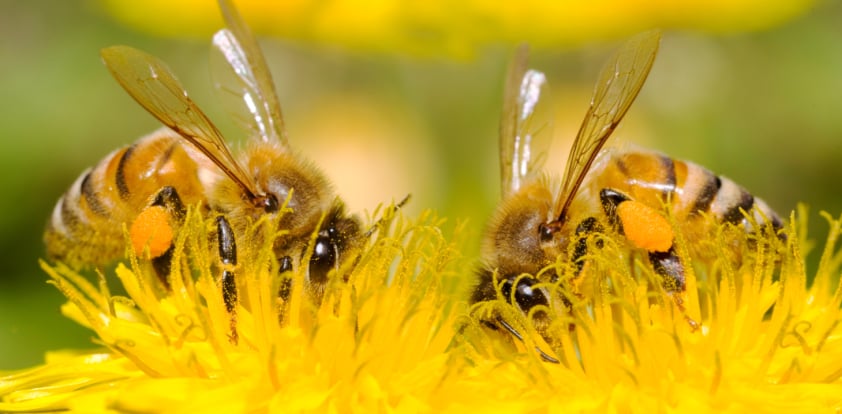EPA Reports Negligible Benefits from Bee-Killing Pesticides (Updated & Corrected)
October 17, 2014 by Paul Ausick
Correction: The original article was based on outdated information and incorrectly stated that GrubEx from The Scotts-Miracle Gro Company still contained a neonicotinoid.
The U.S. Environmental Protection Agency (EPA) on Thursday released results of a review of three neonicotinoid pesticides that are used for insect control on U.S. soybean crops. The pesticides — generically, imidacloprid, thiamethoxam and clothianidin — are also believed to be responsible for Colony Collapse Disorder (CCD), in which bees abandon their hives over the winter and eventually die.
The EPA concludes:
[T]hese seed treatments provide negligible overall benefits to soybean production in most situations. Published data indicate that in most cases there is no difference in soybean yield when soybean seed was treated with neonicotinoids versus not receiving any insect control treatment. … Multiple foliar insecticides are available in instances where pest pressure necessitates a pest management tactic and such foliar insecticides have been found to be as efficacious as neonicotinoid seed treatments for target pests. … In comparison to the next best alternative pest control measures, neonicotinoid seed treatments likely provide $0 in benefits to growers and at most $6 per acre in benefits (i.e., a 0%-1.7% difference in net operating revenue). Some neonicotinoid seed treatment usage could provide an insurance benefit against sporadic and unpredictable pests, particularly in the southern United States. However, BEAD did not find information to support the real-world significance of this benefit, and overall evidence indicates that any such potential benefit is not likely to be large or widespread in the United States.
ALSO READ: Companies That Control the World’s Food
Among many other producers of the pesticide, the state of California lists Germany’s Bayer, which includes imidacloprid in several products; Switzerland-based Syngenta A.G. (NYSE: SYT), which includes thiamethoxam in several products; and The Andersons Inc. (NASDAQ: ANDE), which includes imidacloprid in several products.
A study published in May by researchers from the Harvard School of Public Health replicated earlier research that found a link between low doses of imidacloprid and CCD and also found that low doses of clothianidin had a similar negative impact. The study’s lead author said:
We demonstrated again in this study that neonicotinoids are highly likely to be responsible for triggering CCD in honey bee hives that were healthy prior to the arrival of winter. … Although we have demonstrated the validity of the association between neonicotinoids and CCD in this study, future research could help elucidate the biological mechanism that is responsible for linking sub-lethal neonicotinoid exposures to CCD. Hopefully we can reverse the continuing trend of honey bee loss.
Bees are prime pollinator of about one-third of the world’s crops. If neonicotinoids are associated with killing bee colonies, and if the pesticides are ineffective when applied to seeds, maybe there’s an obvious conclusion to be drawn.
ALSO READ: America’s Most Polluted Housing Markets
Sponsored: Find a Qualified Financial Advisor
Finding a qualified financial advisor doesn’t have to be hard. SmartAsset’s free tool matches you with up to 3 fiduciary financial advisors in your area in 5 minutes. Each advisor has been vetted by SmartAsset and is held to a fiduciary standard to act in your best interests. If you’re ready to be matched with local advisors that can help you achieve your financial goals, get started now.